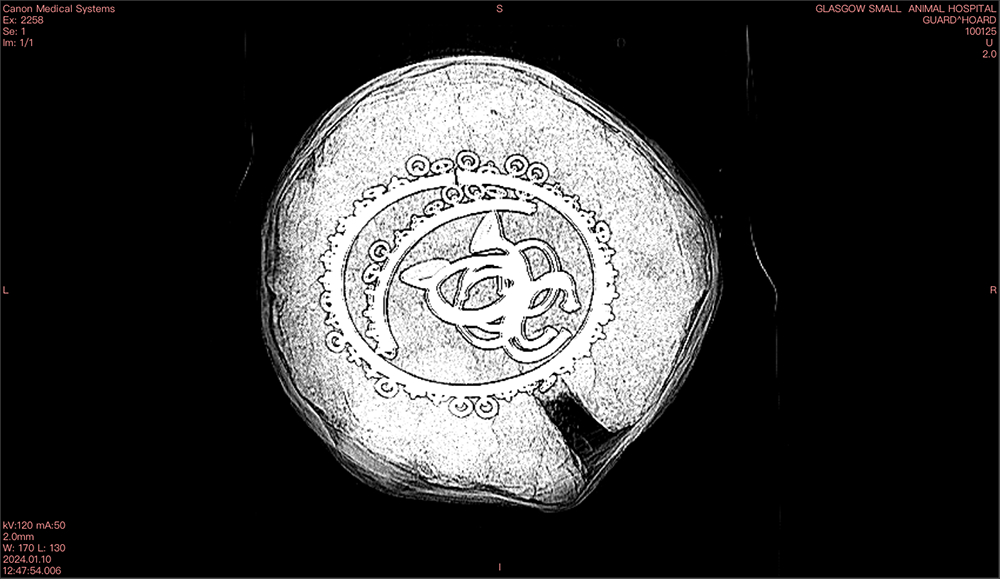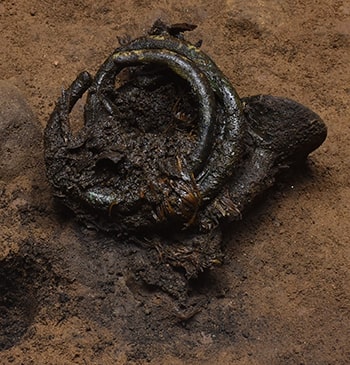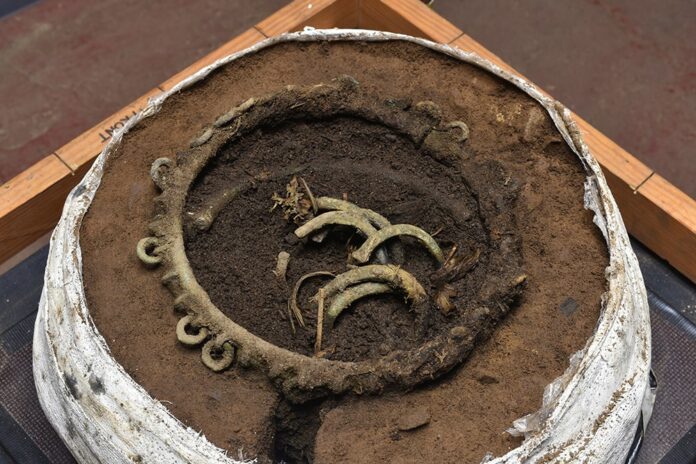In a remarkable discovery that bridges the gap between the distant past and the present, a 3,000-year-old Bronze Age hoard has been unearthed in Scotland. Found during a house-building project at Greenside in Rosemarkie, Highland Scotland, this extraordinary find sheds light on the lives and practices of Bronze Age highlanders. Recent laboratory investigations have revealed rare organic plant remains intertwined with nine bronze bracelets and necklaces, dating back to around 1000 BC. This discovery not only enriches our understanding of ancient Scottish culture but also highlights the significance of integrating archaeological findings into modern developments.
A Significant Discovery Amidst Modern Development

The Rosemarkie hoard stands out due to its context and the insights it offers. Unlike isolated finds, this hoard was discovered in the midst of a Bronze Age village that included at least six roundhouses and a Bronze Age cist grave. The presence of such a well-preserved context provides valuable clues about the settlement and its inhabitants. The fact that these artifacts were found within a structured settlement rather than scattered in isolation offers a more comprehensive understanding of Bronze Age societal organization.
Analyzing the Artifacts
GUARD Archaeology’s analysis of the hoard has revealed a diverse collection of artifacts. Among the finds are a complete neck ring, a partial neck ring, six penannular (incomplete ring) bracelets, and one cup-ended penannular bracelet. These items were discovered intricately intertwined with fibrous cords, which have remarkably survived the passage of 3,000 years. The preservation of these organic materials is particularly noteworthy, as they provide a rare glimpse into the craftsmanship and techniques used in Bronze Age Scotland.

Rachel Buckley, who led the laboratory excavation, emphasized the significance of these organic materials. “The recovery of the artifacts was successfully carried out under the controlled conditions necessary to preserve these highly significant objects, particularly the very delicate organic cords that tether some of the objects together,” Buckley stated. She highlighted the uniqueness of the find, noting that while other hoards have suggested that items were bound together, the survival of the vegetation in the Rosemarkie hoard provides concrete evidence of this practice.
The Role of Copper in Preservation

The preservation of these artifacts is partly attributed to the anti-microbial properties of copper in the bronze. The corrosion products from the copper adhered to the organic materials, protecting them from decay. This chemical interaction played a crucial role in preserving both the bronze artifacts and the fibrous cords that accompanied them, offering a rare opportunity to study the materials and techniques used by Bronze Age craftsmen.
Future Investigations and Educational Initiatives
GUARD Archaeology is set to delve deeper into the reasons behind the burial of this hoard. The shallow pit that contained the artifacts was filled only once, suggesting that the burial might have been intentional, possibly as temporary storage. Further investigation will focus on understanding whether the hoard and the nearby settlement were abandoned simultaneously and what this might reveal about Bronze Age practices.

The archaeological work has also led to educational initiatives funded by Pat Munro (Alness) Ltd, part of Highland Council’s planning consent conditions. Senior Manager Hamish Little expressed enthusiasm about using the discovery as an educational tool for students at Fortrose Academy. Plans are underway to create a permanent feature that will not only highlight the historical significance of the hoard but also encourage community involvement and inform visitors about Rosemarkie’s Bronze Age past.
Conclusion
The discovery of the 3,000-year-old Bronze Age hoard at Rosemarkie provides a fascinating glimpse into ancient Scottish life and practices. Found amidst a well-preserved Bronze Age village, the artifacts offer invaluable insights into the craftsmanship and societal organization of the time. The integration of this discovery into educational initiatives and community projects underscores the importance of preserving and studying our historical heritage. As investigations continue, this remarkable find will undoubtedly contribute to a deeper understanding of Scotland’s Bronze Age past and its enduring legacy.
